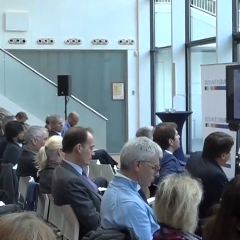Company survey reveals risk of investment leakage
Survey - Conference details - Photos - Video highlights
A large majority of European companies would consider reducing investments in Europe when the EU ETS carbon price increases. BusinessEurope conducted a survey among European manufacturers to evaluate the effect of carbon pricing on their investment decisions.
Most of the companies (89%) believe the EU ETS carbon price will increase, and 71% of respondents expect this will negatively impact their investments in the European Economic Area. The survey also found that today’s importance of the EU ETS carbon price in investment strategies is mixed. Furthermore, most respondents (66%) use or expect to use, an internal carbon price for their investment choices.
BusinessEurope’s Director General Markus J. Beyrer commented:
‘It is key to prevent investments from flowing out of Europe. BusinessEurope supports a meaningful carbon price, but today’s survey confirms that there is an associated investment leakage risk with this. That is why, it is pivotal that the EU ETS Directive is properly equipped to respond to the challenge of investment leakage.’
Carbon cost is among factors influencing corporate strategies regarding their investments in new or existing production installations. Even if businesses do not move their manufacturing sites outside of the EU overnight (‘carbon leakage’), they may still decide to gradually shift more investments out of the EU depending on carbon price (‘investment leakage’).
The results of this survey were presented today at a dedicated high-level conference, co-organized by MEP Ivo Belet and the Slovak EU Presidency. Please find the survey’s results in the brochure here and details about the conference here.
Background:
BusinessEurope conducted the survey between July-September 2016. 120 EEA-based companies responded on the condition of anonymity. 91 were from industries on the current carbon leakage list. The top 5 industries responding were that of chemicals (18), steel (14), cement (12), paper (9) and hollow glass (6). 78% of respondents were classified as “large enterprises” with more than 250 persons employed. 61% of respondents invested both in the EEA and in countries outside of the EEA (non-EEA).

